Shenstone’s Influence
Image: Engraving of William Shenstone unrolling a scroll ‘Hints towards the Elements of
Taste’, held at the top by Athene, the Greek Goddess of Wisdom, known to the Romans as Minerva. They are presented in an idealised landscape with examples of classical architecture in the background. In the foreground, Shenstone is sitting under a tree. The engraving presents Shenstone as an arbiter of good taste. From The Works in Verse and Prose of William Shenstone, Esq., Vol. II, Second Edition (London, J Dodsley, 1765), p 3.
While, as has been shown, Henrietta, Lady Luxborough frequently acted on detailed advice from Shenstone with regard to her house and grounds, there is some evidence that he contributed in greater or lesser degree to the designs of the properties of others of his local friends. Stamford was one of these. Graves notes, ‘the Earls of Stamford and Plymouth…did Mr. Shenstone the honour to consult him in the laying out their environs at Enville and Hewel-Grange’ (Graves, Recollection, pp.144-145). Shenstone’s involvement in the improvements at Hewel Grange, at Tardebigge, is confirmed in letters between him and Luxborough during November, 1753. Passing comments scattered through Shenstone’s Letters indicate that the benefits of his knowledge and taste are sought by, and given to, numbers of local friends. For example: ‘Mr. Thomas Hall knew of my contrivance for the embellishment of Mr. Hardy’s house’ (1748, p.161); ‘Mr. Davenport…is laying out his environs, and I am by appointment to go over’ (1753, p.366). In 1757 he advises J.S. Hylton, a near neighbour, on a particular type of shrub: ‘Laurustinus is ye most desireable, on account of the Figure it makes in Winter’ (p.472). In May, 1759, Shenstone wrote to one young friend, Edward Knight of Wolverley, near Kidderminster:
“I purpose … to take an ampler view of your late Improvements at Wolverley, yn my Leisure, when I was last there, permitted me to do. Mean while, I would have you correct ye Path … at ye upper Part of yr Pine Valley. What think you of selecting a spot for a simple cottage or Menagerie? And what think you of making a Place for Gold-fishes, somewhere in ye stream yt runs beside your Lower-walk.”
And Shenstone is happy to advise on subjects other than how to improve grounds and houses. In 1760 he tells Knight,
“I really think it is in your power to make a considerable Figure in the Province of Architecture: I would therefore wish you to pursue the study of it; whether as an agreeable Amusement, an ornamental accomplishment, or an useful Part of Knowledge.” 17
An instance of Shenstone’s interest in architecture was a ‘folly’ he had built in his grounds, his ‘ruinated Priory’, about which, however, he wrote that it: ‘makes a tenant’s house, that pays me tolerable poundage’ (Letters, p.483).
« Previous in this sectionNext in this section »Continue browsing this section
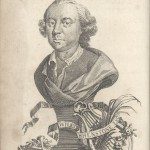 William Shenstone, The Leasowes, and Landscape Gardening
William Shenstone, The Leasowes, and Landscape Gardening
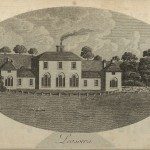 Introduction: William Shenstone and the Leasowes
Introduction: William Shenstone and the Leasowes
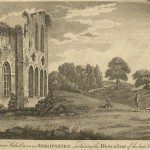 Shenstone’s Early Life
Shenstone’s Early Life
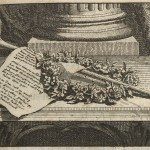 Shenstone, Poetry and Landscape
Shenstone, Poetry and Landscape
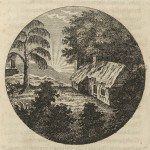 Shenstone, Rural Virtues and the Countryside
Shenstone, Rural Virtues and the Countryside
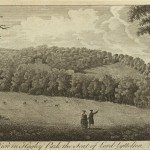 Shenstone and English Landscape Gardening
Shenstone and English Landscape Gardening
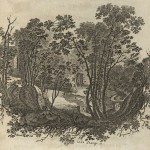 Shenstone and the Creation of the Natural Landscape
Shenstone and the Creation of the Natural Landscape
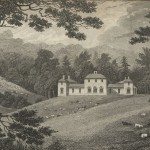 Shenstone, Landscape and Farming
Shenstone, Landscape and Farming
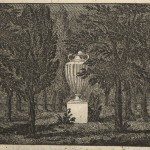 Shenstone’s Embellishments to the Leasowes
Shenstone’s Embellishments to the Leasowes
 The Reputation of the Leasowes
The Reputation of the Leasowes
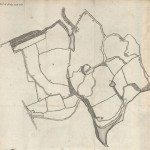 Appreciating the Landscape: Robert Dodsley and the Leasowes
Appreciating the Landscape: Robert Dodsley and the Leasowes
 A “delightful Paradise”: The Leasowes Cult
A “delightful Paradise”: The Leasowes Cult
 “Beauty and Simplicity”: Descriptions of the Leasowes
“Beauty and Simplicity”: Descriptions of the Leasowes
 Shenstone’s Influence
Shenstone’s Influence
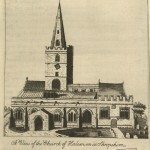 Shenstone and the Locality
Shenstone and the Locality
 Conclusion
Conclusion





